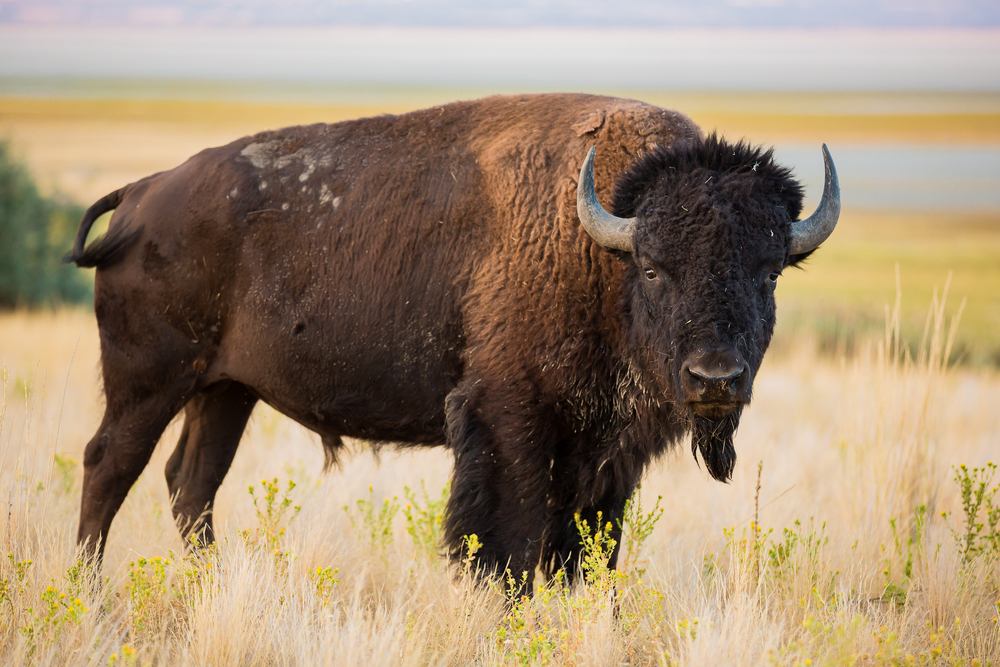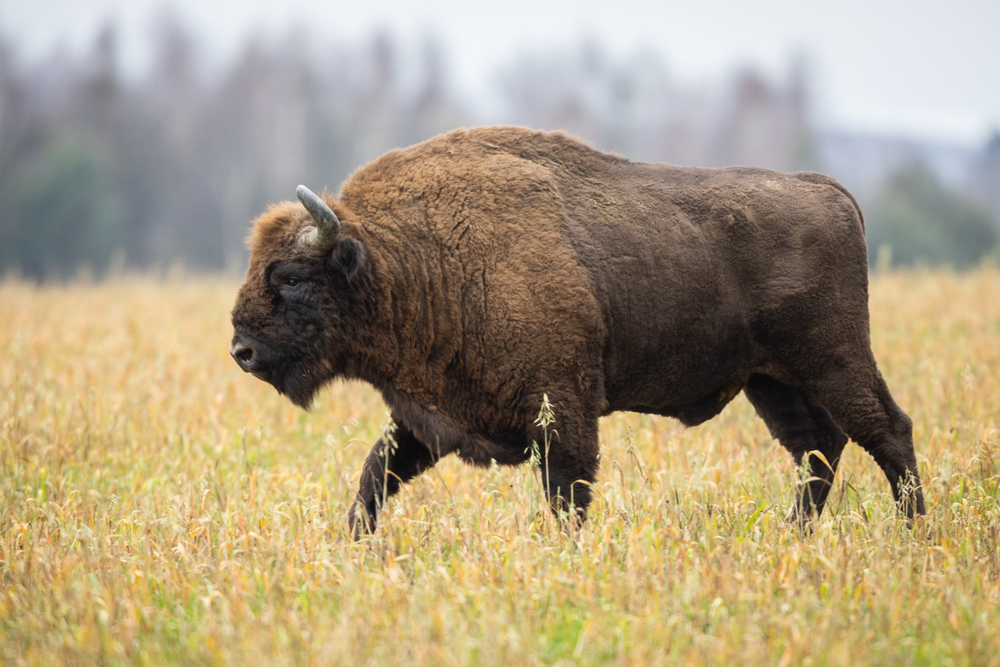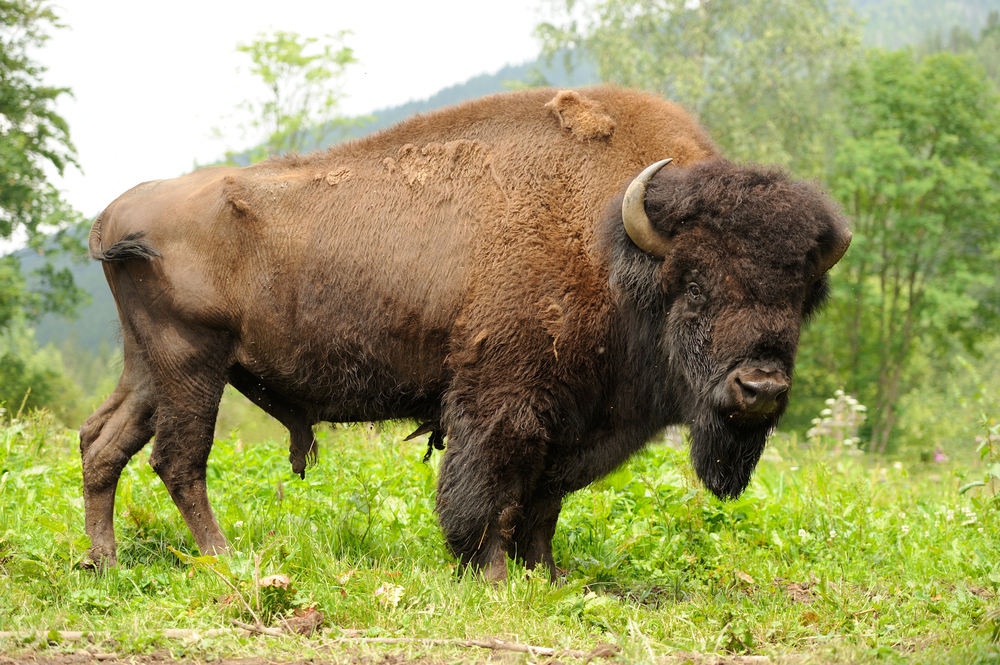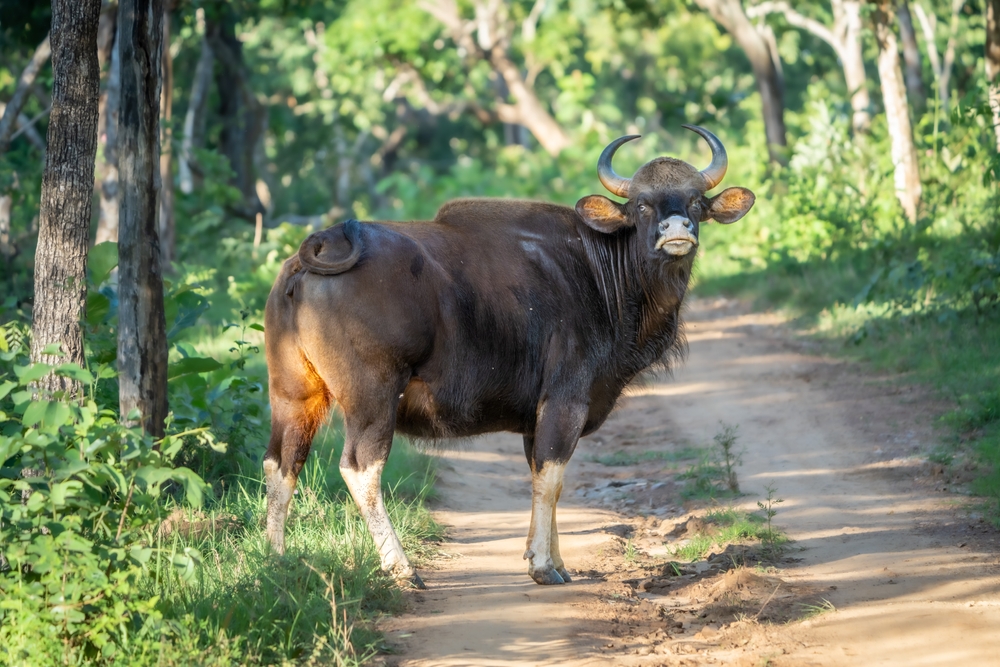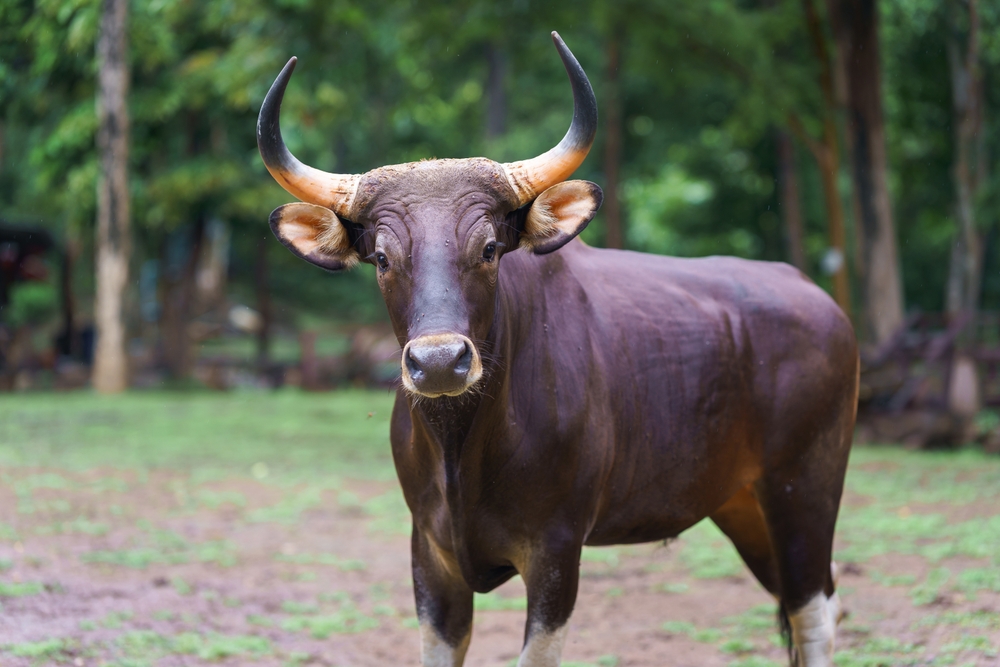The closest related cattle breed is the Red Angus, which is genetically the same as Black Angus except for coat color. Both share identical body conformation, meat quality, fertility, and adaptability traits, but Red Angus are more heat-tolerant due to lighter coat color.
About
The Angus, also known as the Aberdeen Angus, is one of the world’s most popular and commercially valuable cattle breeds, originating in northeastern Scotland during the early 19th century. Developed from hardy, polled (naturally hornless) local cattle in the counties of Aberdeen and Angus, the breed was selected for its beef quality, hardiness, and easy handling.
Angus cattle are medium-sized, with mature bulls weighing 850–1,000 kg (1,875–2,200 lbs) and cows weighing 500–650 kg (1,100–1,430 lbs). They are solid-colored, most commonly black, though the Red Angus is recognized as a separate registry in some countries. The lack of horns, smooth coat, and muscular build make them easy to manage and well-suited for a range of climates.
Renowned for their exceptional beef quality, Angus cattle produce meat with fine marbling that results in superior tenderness, juiciness, and flavor. In many markets, “Certified Angus Beef” has become a premium brand associated with high-grade cuts. Their carcass yield is high, with efficient feed conversion making them a profitable choice for ranchers.
Angus cattle are also valued for their calving ease, good maternal instincts, and adaptability to both intensive grazing and feedlot systems. They are hardy in cold, wet conditions but also adapt well to warmer climates.
The breed’s docile temperament, combined with excellent beef production traits, has made Angus a dominant force in the global cattle industry, with strong populations in the United States, Canada, Australia, and beyond.
The Angus’ scientific classification is Bos taurus, and it belongs to the family Bovidae.
Physical Characteristics
Coat and Coloration:
Angus cattle have a short, smooth, and glossy coat, typically solid black in the Black Angus variety or solid red in the Red Angus variety. The color is uniform, with no white markings except occasionally on the underbelly.
Head and Eyes:
The head is medium-sized with a broad forehead and straight profile. Eyes are large, dark brown, and set wide apart, giving an alert but calm expression. Angus cattle are naturally polled (born without horns), which reduces injury risk within herds.
Body:
The Angus has a deep, well-muscled body with a straight back, full hindquarters, and a broad chest. The build is compact and blocky, indicating strong meat production qualities. The body shape is balanced, with smooth transitions between shoulders, ribs, and hindquarters.
Legs and Feet:
Legs are medium-length, straight, and strong, with well-formed hooves capable of supporting heavy body weight and withstanding varied terrain.
Tail:
The tail is medium-length with a tuft of hair at the end, usually matching the body color.
Size:
-
Male Weight (Bulls): 1,800–2,400 lbs (820–1,090 kg)
-
Female Weight (Cows): 1,100–1,600 lbs (500–725 kg)
-
Height at Shoulder: 50–57 in (127–145 cm) depending on sex and age.
Sexual Dimorphism:
Bulls are significantly larger, more muscular, and have thicker necks than cows. Cows are smaller and more refined in build, with a less pronounced crest along the neck.
The Angus’s polled head, solid coloration, and compact, heavily muscled frame make it one of the most recognizable and sought-after beef cattle breeds worldwide.
Reproduction
Mating Behavior:
Angus cattle reproduce naturally through pasture breeding or by artificial insemination (AI) for genetic selection. Bulls are active breeders, and cows display typical estrus behavior such as increased activity, mounting other cows, and vocalizing.
Breeding Season:
Angus cattle can breed year-round, though many producers plan breeding to align calving with spring or early autumnfor optimal pasture conditions and calf survival.
Gestation and Calving:
-
Gestation Period: Approximately 283 days (about 9 months).
-
Calving Interval: Typically 12 months, though good herd management can shorten intervals.
-
Calving is generally easy in Angus due to moderate birth weights and well-structured pelvic anatomy in cows.
Calf Birth Weight:
-
Bulls: 75–85 lbs (34–39 kg) on average.
-
Heifers: 65–75 lbs (29–34 kg) on average.
Maternal Ability:
-
Angus cows are known for strong maternal instincts, excellent milk production, and protective behavior toward calves.
-
Calves are vigorous at birth, standing and nursing quickly.
Maturity:
-
Heifers: Can be bred at 14–16 months if they have reached at least 65% of their mature weight.
-
Bulls: Reach reproductive maturity at around 12–14 months, though optimal breeding performance is usually after 18 months.
The Angus’s fertility, ease of calving, and strong maternal performance make it one of the most reliable and productive beef breeds for both commercial and purebred herds.
Lifespan
Lifespan in the Farm/Ranch Setting:
Angus cattle typically live 12 to 15 years under good management conditions. In commercial beef production, most cows remain in the breeding herd until around 8 to 10 years of age, when reproductive efficiency begins to decline.
Lifespan in Optimal Conditions:
When kept in low-stress environments, with quality nutrition and veterinary care, Angus can live longer than average.
-
Average Maximum Lifespan: 18 to 20 years.
Threats to Longevity:
-
Reproductive Wear: Multiple pregnancies over the years can lead to reproductive tract issues.
-
Lameness: Hoof problems, arthritis, and leg injuries can reduce working life, especially in bulls.
-
Nutritional Deficiencies: Poor forage quality can shorten lifespan and productivity.
-
Disease: Susceptible to common bovine illnesses such as respiratory disease, mastitis, and parasitic infestations.
Adaptations for Longevity:
-
Polled Trait: Absence of horns reduces injury risk in the herd.
-
Hardiness: Angus cattle are adaptable to a wide range of climates, from cold northern winters to hot summers.
-
Calving Ease: Lower rates of calving complications contribute to herd health and longevity.
The Angus’s adaptability, strong constitution, and efficient reproductive performance help ensure a long, productive lifespan in both commercial and purebred operations.
Eating Habits
Diet:
Angus cattle are herbivorous ruminants that graze primarily on pasture grasses and consume a variety of forages.
-
Primary Feed: Fresh pasture grasses such as fescue, ryegrass, clover, and orchardgrass.
-
Supplemental Feed: Hay, silage, and crop residues (corn stalks, alfalfa) during winter or drought periods.
-
Grain Finishing: In beef production, many Angus cattle are grain-finished on corn, barley, or sorghum to improve marbling and tenderness in meat.
-
Minerals: Access to salt and mineral blocks is essential for health and productivity.
Feeding Behavior:
-
Grazes for 6–10 hours per day, interspersed with rest and rumination periods.
-
Selective grazers, often choosing the most nutrient-rich and tender plants available.
-
Feed intake varies by season, stage of growth, and reproductive status.
Foraging Strategy:
-
Efficient grazers that thrive on a variety of pasture types, from lush temperate grasses to mixed prairie and rangeland vegetation.
-
In extensive rangeland systems, they will travel significant distances to find quality forage.
Adaptations for Feeding:
-
Four-Chambered Stomach: Rumen, reticulum, omasum, and abomasum work together to break down fibrous plants and extract nutrients.
-
Microbial Digestion: Symbiotic gut microbes ferment cellulose, producing volatile fatty acids for energy.
-
Seasonal Adaptability: Capable of adjusting intake and diet composition between summer grazing and winter feed supplementation.
Captive Diet Management:
-
Balanced rations of forage and concentrates ensure proper weight gain and reproductive performance.
-
Overfeeding grain can cause digestive disorders such as acidosis, so gradual diet changes are important.
The Angus’s efficient grazing habits, adaptability to varied forage types, and digestive specialization make it one of the most productive and feed-efficient beef breeds in the world.
Uniqueness
Naturally Polled:
Angus cattle are born without horns, reducing the risk of injury to other cattle and eliminating the need for dehorning.
Superior Beef Quality:
Renowned for producing well-marbled, tender beef with excellent flavor, earning Angus beef premium status in global markets.
High Fertility and Calving Ease:
Known for exceptional reproductive performance, with low calving difficulty and vigorous, fast-growing calves.
Climate Adaptability:
Thrive in diverse climates—from cold northern pastures to hot, arid rangelands—due to strong genetic hardiness.
Market Influence:
The Angus breed has set global beef industry standards, with many branded beef programs (such as Certified Angus Beef®) based on its quality.
Genetic Improvement Leader:
Widely used in crossbreeding to improve meat quality, fertility, and calving ease in other cattle breeds.
The Angus’s combination of polled genetics, meat excellence, and adaptability has made it one of the most influential and economically important cattle breeds worldwide.
Be the First to Share Photos of This Species.
FAQ’s
1. What is the closest species to the Angus?
2. How does the Angus compare to other cattle?
The Angus cattle vary in a number of ways from other cattle as noted below:
-
Beef Quality: Produces superior marbling and tenderness compared to most beef breeds, often commanding higher market prices.
-
Reproductive Performance: High fertility, strong maternal instincts, and excellent calving ease give it an advantage over larger-framed breeds like Charolais.
-
Adaptability: Thrives in both intensive and extensive grazing systems, unlike some specialized beef breeds.
-
Polled Trait: Naturally hornless, unlike Herefords or Shorthorns which may require dehorning.
-
Market Recognition: Strong consumer recognition through branded beef programs sets it apart from many other cattle breeds.
3. What national parks provide the best chances to see an Angus?
While Angus cattle are domesticated and not found in the wild, they can be seen grazing in ranch lands and heritage farms within or near protected areas, such as:
-
Scotland’s Cairngorms National Park (UK) – in traditional grazing pastures.
-
Yellowstone National Park Gateway Ranchlands (Montana/Wyoming, USA).
-
Blue Mountains National Park Adjacent Farms (New South Wales, Australia).
-
Glenlivet Estate (within the UK’s national park system).
-
Highland estate conservation grazing projects in the UK and New Zealand.
These areas often feature Angus cattle as part of sustainable grazing and heritage livestock programs.




































































